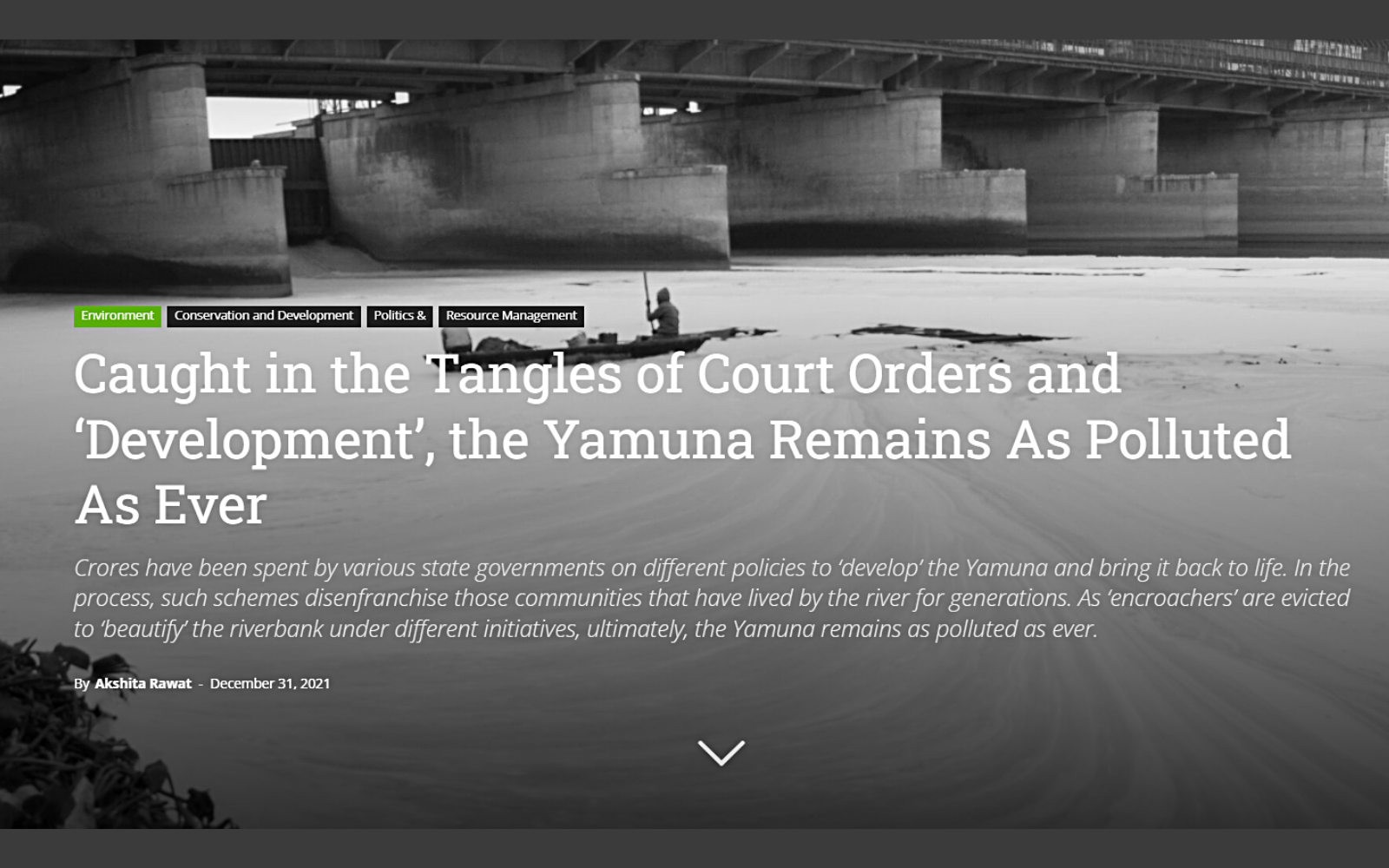[This article was originally published in The Bastion]
Crores have been spent by various state governments on different policies to ‘develop’ the Yamuna and bring it back to life. In the process, such schemes disenfranchise those communities that have lived by the river for generations. As ‘encroachers’ are evicted to ‘beautify’ the riverbank under different initiatives, ultimately, the Yamuna remains as polluted as ever.
The Yamuna river has a long-standing history with the inhabitants of Delhi. The city developed around the river, it served as a source of water, and its floodplains became both a home and a source of livelihood for marginalised communities.
Panoramic view of Old (in the left side) and New Delhi around or before 1857, dated 1860, from “The Illustrated History of the British Empire in India and the East. Volume 1. 1860 by E.H. Nolan”. | Source.
Today, the river is no longer a river. Its waters stand polluted and lifeless.
Over the years, beginning from 2015 up until 2020, NGT orders have pushed for the eviction of the urban poor from the Yamuna’s floodplains, as well as the removal of agricultural activities. All of this is done to ‘rejuvenate’ the Yamuna and protect it from the ‘pollution’ such settlements generate.
Such orders fail to acknowledge the contested nature of the floodplains—and the fact that its residents have hardly contributed to the river’s decline.
Crores have been spent by various state governments on different policies to ‘develop’ the Yamuna and bring it back to life. In the process, such schemes disenfranchise those communities that have lived by the river for generations. As ‘encroachers’ are evicted to ‘beautify’ the riverbank under different development initiatives, ultimately, the Yamuna remains as polluted as ever.
⼮
Flowing along the east of Delhi, the Yamuna enters the city from Palla village, making its way down into the urban sprawl. As it does so, the topography of its floodplains changes too, shifting from farmland, to slums, to permanent structures, to colonies. The waters between Palla and the Wazirabad barrage are relatively cleaner, supporting aquatic life. This is where Delhi’s fisherfolk also reside.
Yet, as the river passes through Delhi, it becomes more and more polluted: untreated sewage, industrial effluents, and construction debris are dumped in and around the Yamuna. The dissolved oxygen (DO) in the river’s water—which helps determine whether the waters can support aquatic life or not—falls within the standard range (or higher than 6 mg/L) only at Palla. It reaches almost 0 as the Yamuna exits Delhi at Okhla. The Biochemical Oxygen Demand (BOD) levels—which measure “the amount of oxygen consumed by bacteria and other microorganisms while they decompose organic matter”—are as high as 57 mg/L (with the standard range being less than 2 mg/l) when the Shahadra and Najafgarh drains join the Yamuna. This indicates their huge contribution to the pollution in the Yamuna.
With respect to such indicators, there has been no change in the water quality of the Yamuna over the years. Tons of untreated sewage and industrial effluents are still dumped in the river on a daily basis, contributing to 76% of the Yamuna’s total pollution.
⼮
To tackle the worsening pollution of the Yamuna, many ‘beautification’ and cleanliness drives have been launched over the years, most of which aim for the removal of bastis, or informal settlements, from the floodplains. The State rationale is that these settlements are polluting the river.

